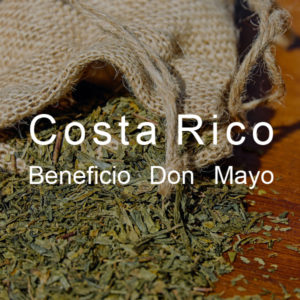Introduction of El Llano Information of Don Orlando processing Plant in Hesta Manor, Costa Rica

For professional baristas, please follow the coffee workshop (Wechat official account cafe_style)
Traditionally, Costa Rica prides itself on its washed coffee-picking ripe red-purple berries by hand and tightly controlling the soaking and fermentation process. Not much and not a lot of fermentation makes the coffee a perfect balance between clarity and complexity; even if Costa Rican beans are the best washed beans in the world today, I believe many people will agree.
However, in recent years, this tradition is no longer dominant-the new "dry" treatment has become a trend, and micro-processing plants have been set up one after another. Because the water consumption is only 5% of that of traditional washing plants, and there is no need for huge sinks and exposure fields-these micro-treatment plants can be far away from the riverbank; at the same time, the investment required is relatively small, so that many independent estates or small cooperatives can afford it. More importantly, with the new treatment method and the courageous manor owner, a kind of "honey-treated coffee" with low acidity, high complexity and rich sweet flavor has become the target of competition in the coffee industry in recent years. In recent years, the outstanding ones have shone brilliantly in the major competitions, which have greatly enhanced the international reputation of the estates-for example, Brumas, Herbazu, Helsar, Las Lajas, Don Mayo, Montes de Oro.
Because the characteristics of honey-treated coffee depend to a high extent on the setting of the pulp scraping machine-the more pulp you retain, the more obvious the characteristics of honey treatment. Of course, it takes a bit of risk to produce the most honey-treated coffee, because the more pulp you retain, the higher the risk of overfermentation. It may be the microclimatic conditions of the location of the treatment plant (sunshine / rainfall probability / air humidity.) Or it is the skill of the processor, or it may be purely the preference of the processor. So even coffee, also known as "Honey Coffee", actually has varying degrees of honey-treated features.
The flavor of this batch of beans belongs to the moderately high honey treatment: low acidity, rich sweet aroma, high thickness and complexity; compared with the existing Herbashi and Jinshan treatment plants, the honey treatment features are relatively obvious, and similar to Lajas, but still significantly lower than Brumas. You can obviously feel this when you have a single product. I believe that the addition of espresso to espresso will bring a lot of unique sweetness of honey treatment.
English product name: Tarrazu El Llano Y-Honey
Country: Costa Rica
Producing area: Tarazhu
Rating: SHB
Producer: Tang Mayo processing Plant
Treatment method: yellow honey treatment
Variety: Kaddura (Caturra)
Altitude: 1500-1950 m
Harvest period: December of each year to March of the following year
Important Notice :
前街咖啡 FrontStreet Coffee has moved to new addredd:
FrontStreet Coffee Address: 315,Donghua East Road,GuangZhou
Tel:020 38364473
- Prev

La Pira of Tara Jubila Manor in Costa Rica introduces the organic certified coffee production estate.
For professional baristas, follow the Coffee Workshop (Wechat official account cafe_style), the 50-year-old Pilla estate named after Carlos Carlos's father Gilberto Urena's nickname PIRO. After inheriting the family farm, Carlos operates as an organic certified coffee farm, but in recent years Carlos has chosen another type of manor to take care of it because of its high cost.
- Next

Introduction to Queen Farm information of Fazenda Rainha in Brazil
For the exchange of professional baristas, please follow the coffee workshop (Wechat official account cafe_style) Brazilian coffee, there are many kinds of Brazilian coffee, like other Arabica coffee, most Brazilian coffee is not washed but dried, they are classified according to the name of the country of origin and the port of transport. Brazil has 21 states and 17 states produce coffee, but five of them produce the most coffee.
Related
- Detailed explanation of Jadeite planting Land in Panamanian Jadeite Manor introduction to the grading system of Jadeite competitive bidding, Red bid, Green bid and Rose Summer
- Story of Coffee planting in Brenka region of Costa Rica Stonehenge Manor anaerobic heavy honey treatment of flavor mouth
- What's on the barrel of Blue Mountain Coffee beans?
- Can American coffee also pull flowers? How to use hot American style to pull out a good-looking pattern?
- Can you make a cold extract with coffee beans? What is the right proportion for cold-extracted coffee formula?
- Indonesian PWN Gold Mandrine Coffee Origin Features Flavor How to Chong? Mandolin coffee is American.
- A brief introduction to the flavor characteristics of Brazilian yellow bourbon coffee beans
- What is the effect of different water quality on the flavor of cold-extracted coffee? What kind of water is best for brewing coffee?
- Why do you think of Rose Summer whenever you mention Panamanian coffee?
- Introduction to the characteristics of authentic blue mountain coffee bean producing areas? What is the CIB Coffee Authority in Jamaica?

